In Washington D.C., new details have emerged about the Bezos Learning Center, an education and cultural center coming to the site of the demolished Gyo Obata–designed restaurant pavilion not far from the National Mall. Perkins&Will is the architect of the forthcoming building.
The scheme by Perkins&Will leans into the themes of outer space and galaxies. Since its preliminary design submission for the competition, Perkins&Will’s concept has proffered a building that embodies the shape (and spirit) of stars and interstellar elements.
The United States Commission of Fine Arts (CFA), alongside the Smithsonian Institution and Perkins&Will, shared new information and design renderings in the Concept Phase Project Report Submission last week. The report delves into the Smithsonian’s preferred design choices when it comes to facade detailing and landscaping.
Since Perkins&Will was named the winning firm out of the five shortlisted finalists, the design team has met biweekly with the Smithsonian Institution to further develop its concept.
Central to the project is the Bezos Learning Center, an institution for the study of STEAM disciplines. The CFA report laid out the “three tenets” the project aims to address: learning, context—referring to the existing, historic site—and journey. These will be addressed through the new building, with the construction of the Phoebe Haas Observatory and Astronomy Park, and through an engaging and historically respective landscape design.
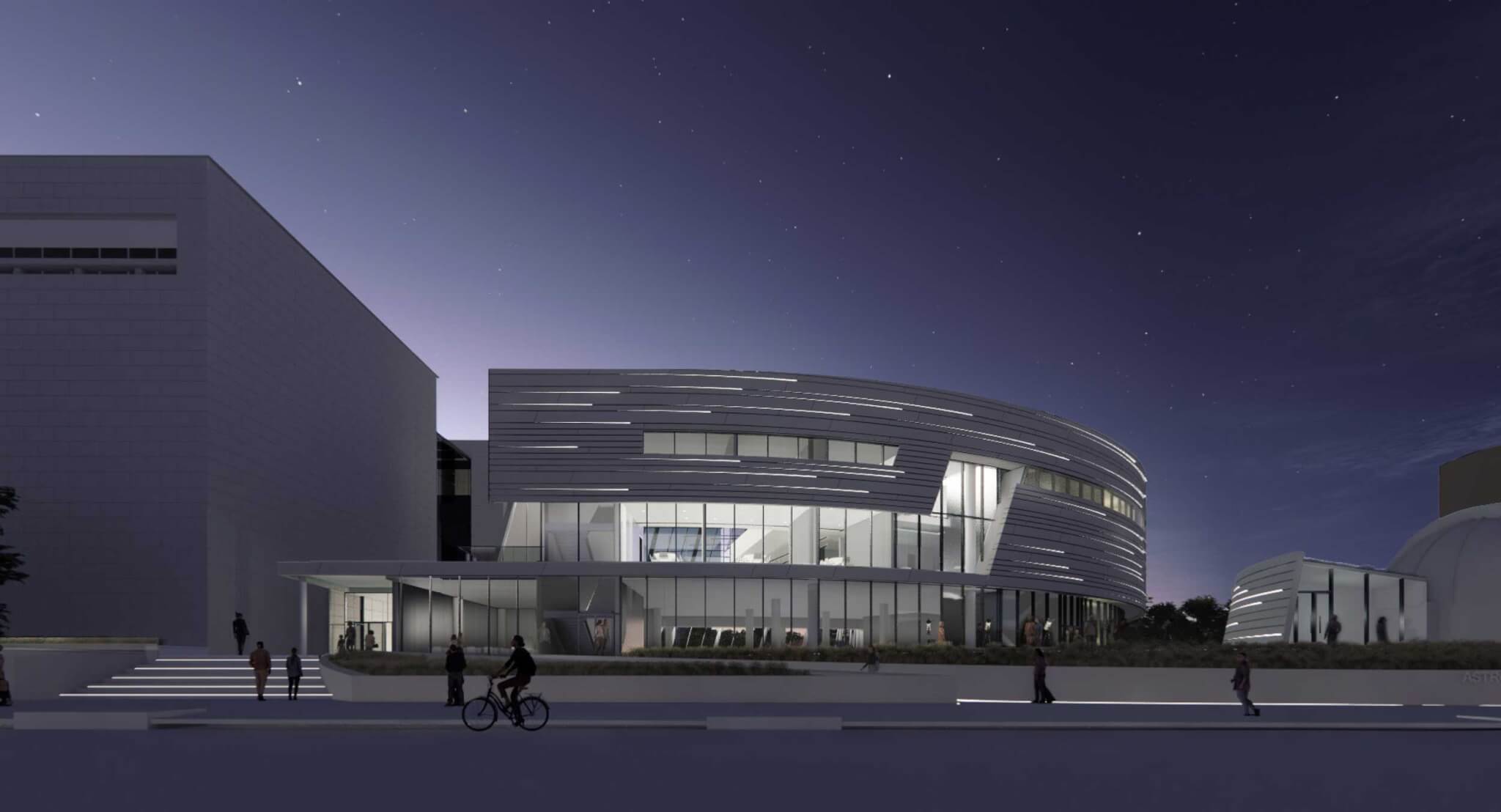
Due to its location adjacent to the National Air And Space Museum (NASM) and proximity to the National Mall, the Bezos Learning Center, according to the report, must “respond to NASM’s architecture and massing with an addition that maintains the form and integrity of the NASM and environment.” It similarly must use a material palette in line with that of the NASM and not obstruct views out toward the historic monuments and lawns.
Toward this end, in their conceptual plans, the architects have envisioned a building that doesn’t exceed the height of the adjacent NASM buildings. “The BLC identity is purposefully not an extrusion of NASM, but rather a pavilion-like form surrounded by landscape,” the CFA report stated.
Renderings depict the Bezos Learning Center with a facade material that conforms with the color and texture of the NASM buildings. Where the neighboring structures differ is in their shape, while the NASM buildings were realized as a succession of boxy volumes, the forthcoming Bezos Learning Center will have a rounded form.
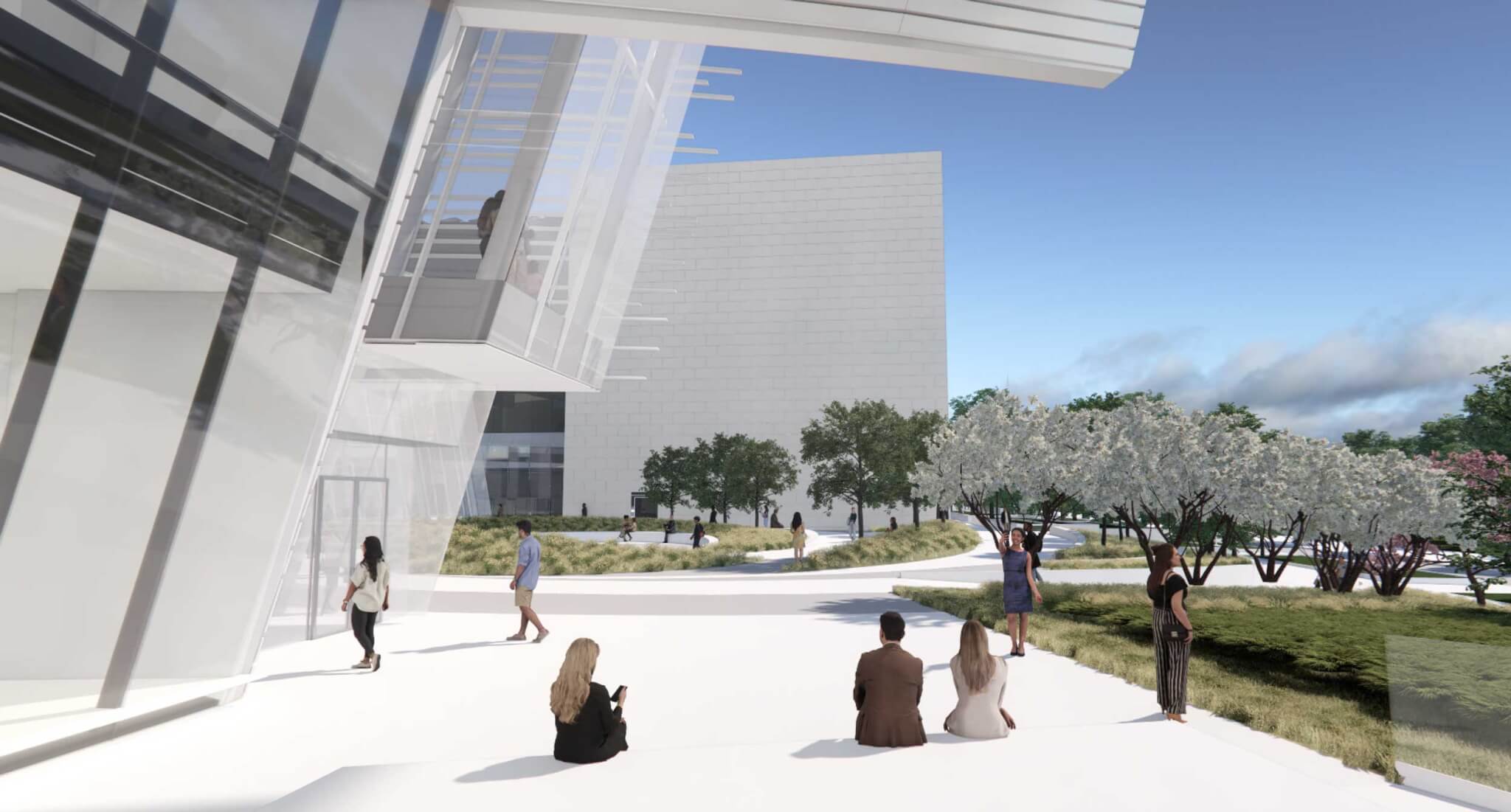
“The inspiration for the form of the BLC is a spiral galaxy, whose form reflects two-thirds of the known galaxies, including our own Milky Way,” stated a description in the CFA report.
The galaxy concept is achieved both inside and outside of the building. On the exterior, slits located across its rounded faces will illuminate from within at night, “recalling shooting stars in the night sky.”
Inside, circulation centers around a multistory spine that embodies the spiral nature of galaxies. Other prominent architectural elements ideated for the design include an observation deck and an elevated viewing platform with a flat roof. From these vantage points visitors can look out toward the National Mall and a blank wall of the NASM where audio-visual projections can take place.
In a facade materiality study, three concepts featuring an aluminum skin were drafted and compared. The preferred option implements a tapered aluminum fin, while the alternatives propose a bulkier fin with more dimension and a design where the aluminum fins are tubular.
“While specific material and color options will be explored as design progresses, the goal is to balance the relationship with and the distinction between the NASM facade,” the report said.
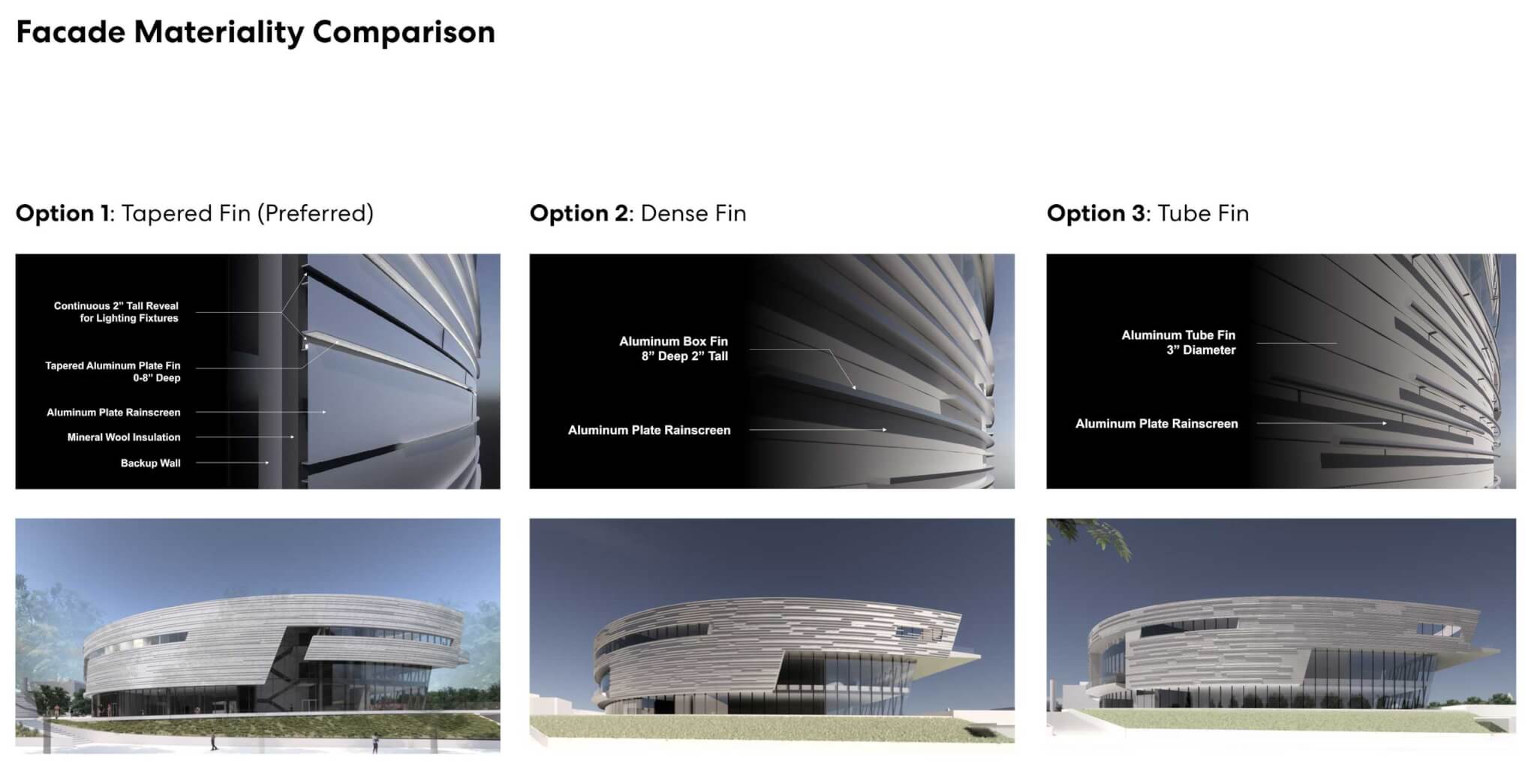
Two options are also being weighed for the landscaping around the site. The preferred option proposes a design that leans more into the spiral concept realized in the footprint of the new building, while the alternative follows the orthogonal layout in line with the design realized for Gyo Obata’s 1988 landscape.
Also under consideration is the connection between the new Bezos Learning Center and the existing National Air and Space Museum. The preferred option proposes “an integrated vestibule” so as to not have a disruptive or unsightly gap between the two buildings.
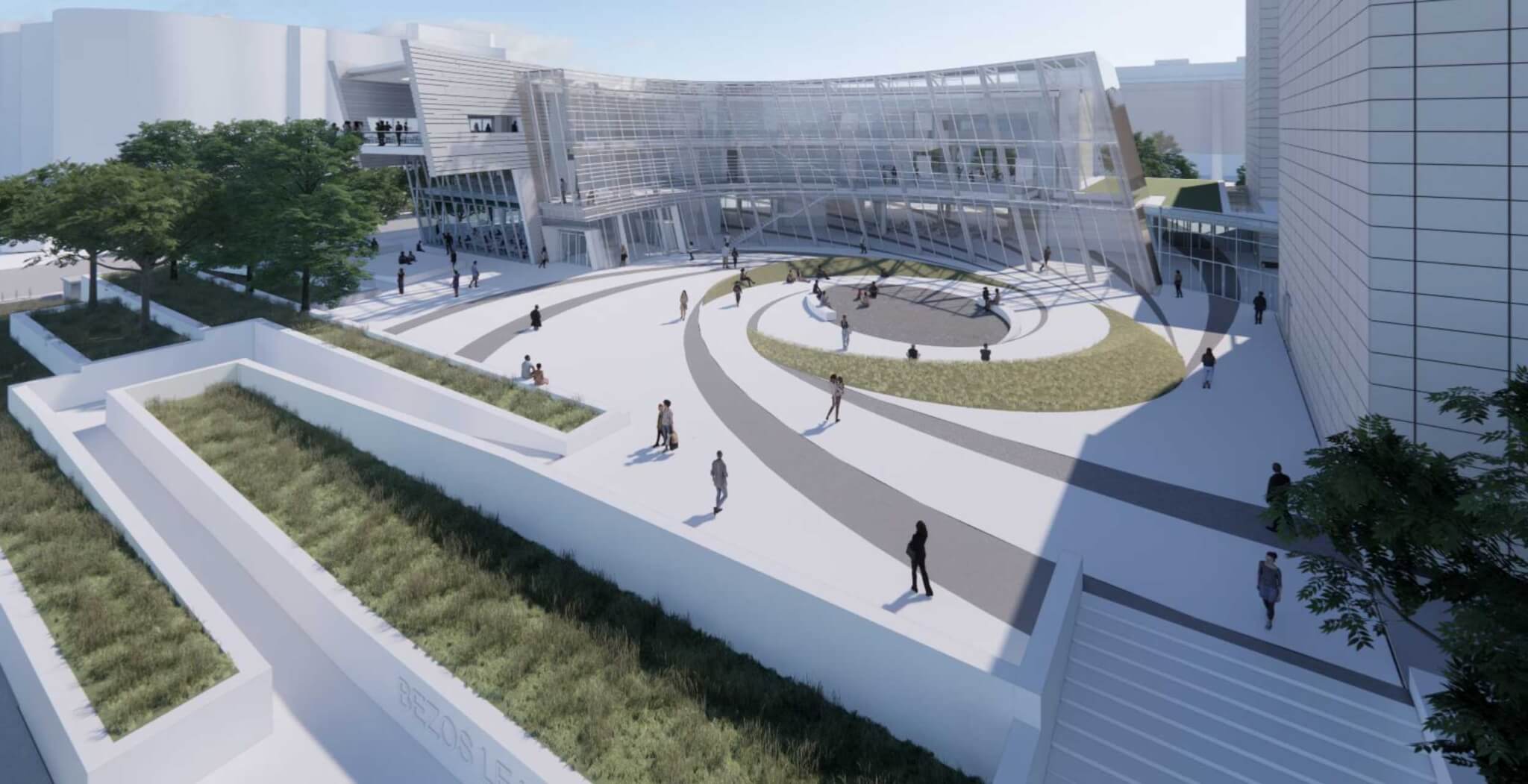
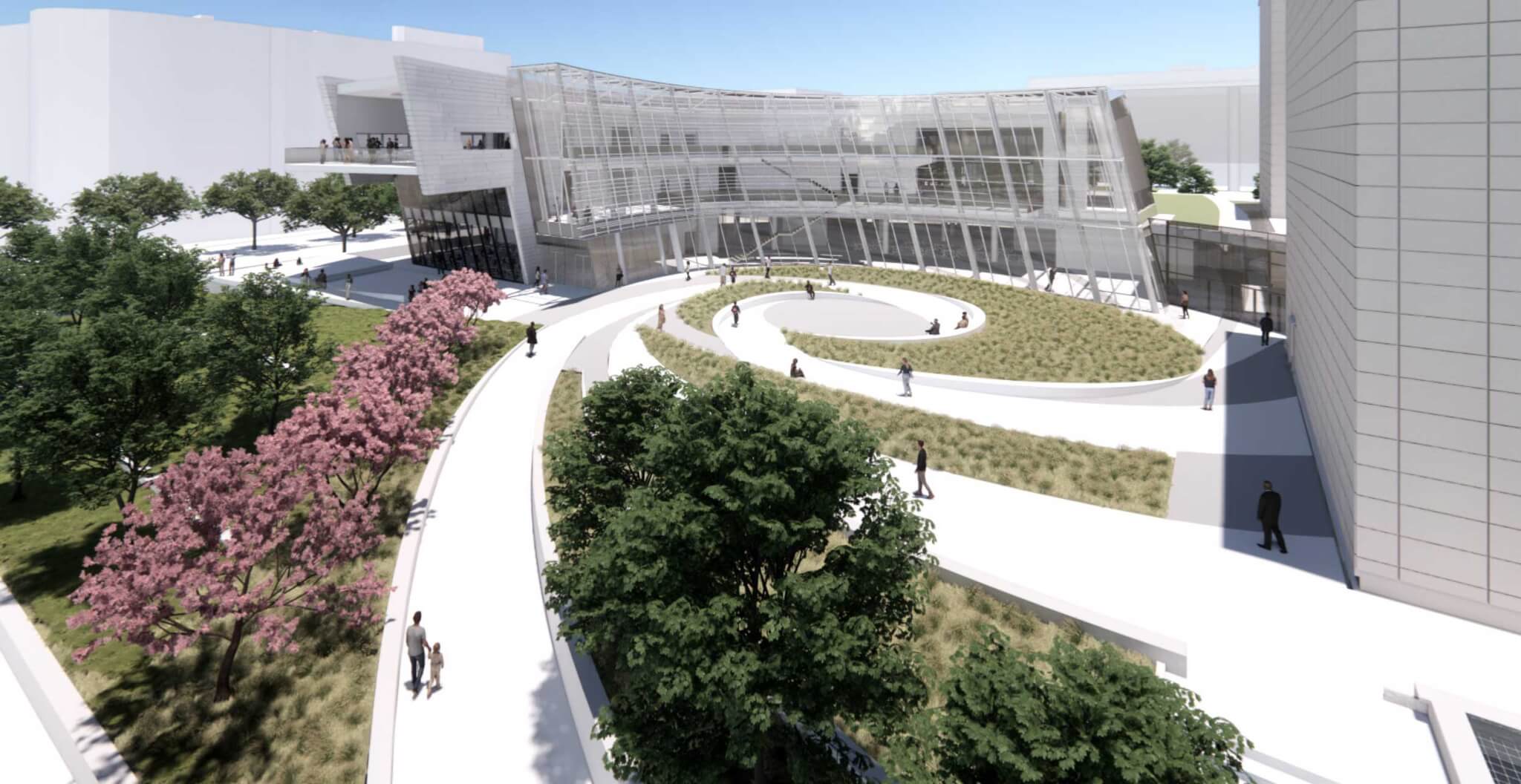
Elsewhere on the site, the forthcoming Phoebe Waterman Haas Observatory will be positioned at the intersection of 4th Street SW and Independence Avenue. Like its neighboring structures the architecture of the observatory will be designed in line with the NASM and the Bezos Learning Center. Inside the domed observatory, star gazers can peer through the relocated 1960’s Boller and Chivens 16-inch telescope.
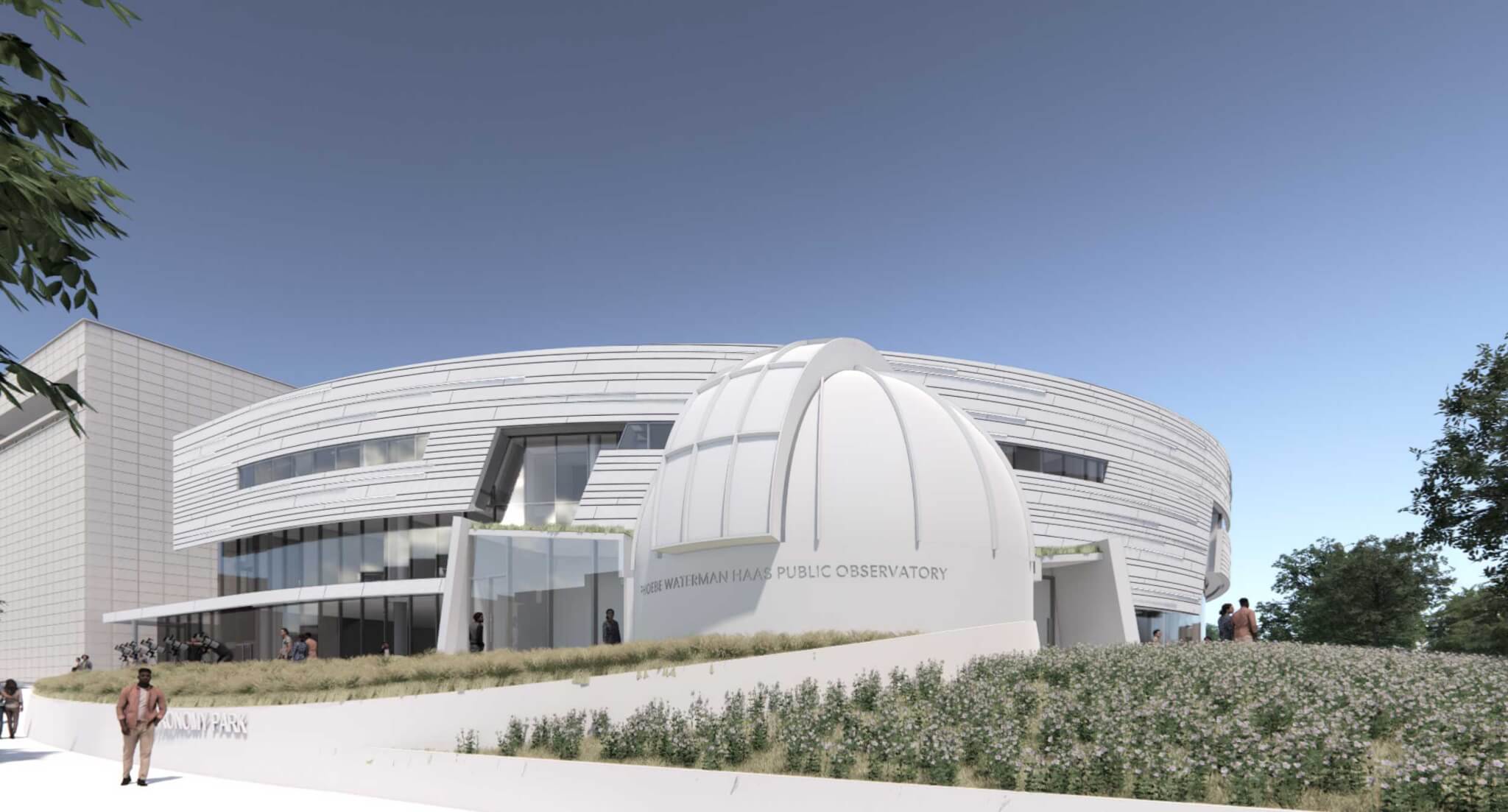
Construction on the Bezos Learning Center and surrounding site is expected to start in late 2025 and wrap up in early 2027 with an opening date in mid-2027.

